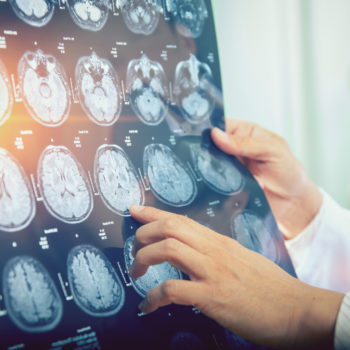Same symptoms, different treatments. Stroke is among the first causes of death in the world and it can be of two types: ischemic stroke and hemorrhagic stroke. For both time is essential, because the faster the symptoms are recognized, the sooner it can be treated properly. However, the treatment is different depending on the nature of this adverse cerebrovascular event, as explained by Dr. Simona Marcheselli, Head of the Operational Units of Emergency Neurology and Stroke Unit at Humanitas.
Brain stroke, after heart ischemic diseases and tumors, is the third cause of death in Italy and the first cause of disability. Its incidence increases with increasing age, especially after the age of 65. This event is characterized by an interruption of the blood flow to the brain, resulting in a lack of oxygen supply. Different functions can be lost depending on the affected brain areas: from motor to language skills, for example. Depending on the cause of this interruption in blood flow, a distinction is made between ischemic and hemorrhagic strokes.
Ischemia and hemorrhage
Most strokes – about 80% – are ischemic in nature. Blood circulation is hampered by the formation of an atherosclerotic plaque or thrombus, i.e. a blood clot, which originates above this plaque in a vessel that carries blood to the brain. The thrombus, however, can also come from the heart and reach the brain. A minor form is the so-called transient ischemic attack (TIA) or “mini-stroke”. The origin is the same but differs in terms of the shorter duration of symptoms and the lower severity.
When a small, weakened blood vessel in the brain ruptures, a hemorrhagic stroke occurs. Hemorrhage may also affect, although in a number of residual cases of this form of stroke, the space under the membrane that protects the brain: it is subarachnoid hemorrhage often caused by the rupture of an intracranial aneurysm.
Treatments
For the two forms of stroke, the symptoms are the same; among the main ones there are difficulties in speaking, facial paralysis, difficulty in moving an arm. Therefore, an examination is of fundamental important to distinguish between hemorrhagic and ischemic stroke: “With the patient’s arrival at the Emergency department, a CT must be performed as soon as possible to define the characteristics of the event, to assess brain suffering and to identify the risk of brain bleeding or exclude a hemorrhage”, Dr. Marcheselli recalls.
The diagnosis will be followed by the most appropriate treatment: “For ischemic stroke, in selected cases, the intravenous thrombolysis therapy is performed to dissolve the thrombus within four and a half hours of the first symptoms. This blood clot can be mechanically removed in the most serious cases with an intracranial catheter.
Anti-aggregating therapy should be used if the patient cannot be thrombolised. Finally, it may be necessary to free the carotid from atherosclerotic obstruction, either surgically or by angioplasty.
In the event of a hemorrhagic stroke, however, the aim of the treatment will be to “manage bleeding and prevent complications. The surgery will be aimed at reducing intracranial blood pressure,” concludes the specialist.









